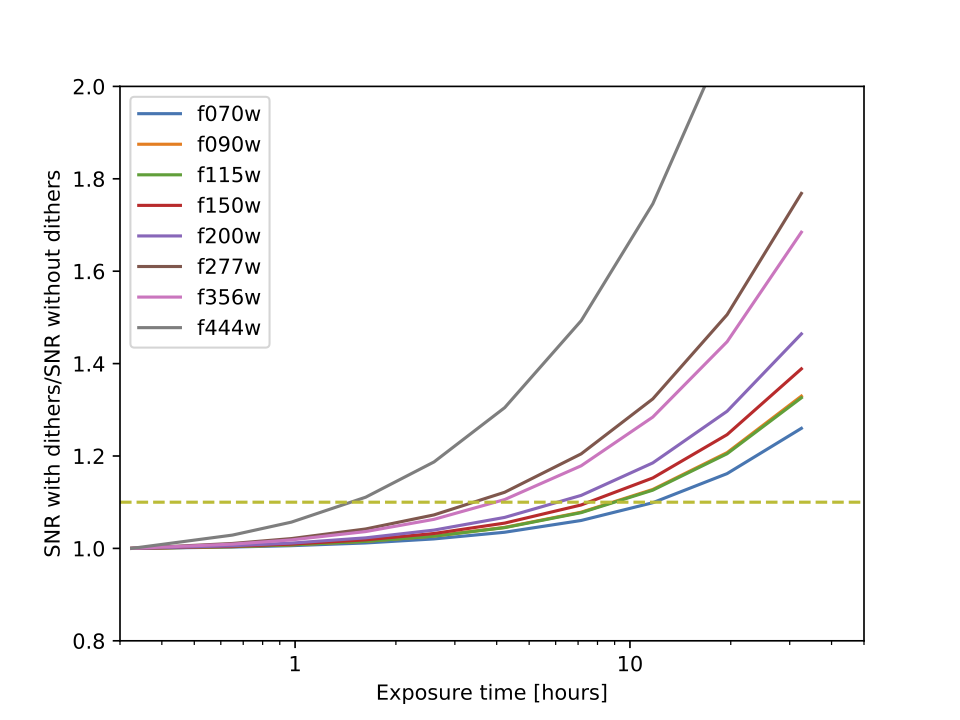JWST ETC Residual Flat Field Errors
The JWST ETC includes pixel-to-pixel noise due to an imperfectly corrected flat field. This noise source is often mitigated by dithering.
Since the ETC currently does not model dithers, except in a limited sense for a few special cases, such as coronagraphy and IFU spectroscopy, the absence of dithers will limit the sensitivity for very deep (>10,000 s) imaging observations and will also limit the signal-to-noise ratio (SNR) that can be achieved for bright sources.
On this page
Words in bold are GUI menus/
panels or data software packages;
bold italics are buttons in GUI
tools or package parameters.
Effects of the residual flat field error on deep observations
As a general rule, observers dependent on total exposure times in excess of ~10,000 seconds for broadband imaging (and somewhat longer for most spectroscopy modes) should be aware of the effects of residual flat field errors. In the limit of extremely long total exposure times, in the absence of dithers, all observations will eventually be limited by the residual flat field error. The practical effect is that ETC calculations will have a "noise floor," beyond which observations with increasing numbers of exposures no longer increase the signal-to-noise ratio by \sqrt{n_{\rm dither}}. This is true both for faint and bright sources. Furthermore, in the case of faint sources, background limited observations (i.e., with high background levels compared to the source) are particularly susceptible to residual flat field errors. This means that narrowband filters will take longer to be limited by the flat field error, and spectroscopy is similarly less affected.
Effects of the residual flat field error on observations of bright sources
Another effect of the residual flat field error is that there is a limit on how high the SNR will get for bright sources. The SNR ceiling will depend on the flat field error assumed for each instrument, as well as the number of pixels the signal is spread over. For most modes, observations of point sources will be limited to SNRs of a few 100. Note that time-series observations (e.g., of exoplanet transits) are immune to this, as they rely on relative measurements on the same pixels.
The special case of NIRSpec MSA
Observers using the multi-shutter array (MSA) with NIRSpec should be aware that the residual flat field error is significantly worse than for other modes, as the flat fields for the many individual shutters are necessarily of lower quality than what can be done by, e.g., imaging. In this case, it is not expected that the noise floor can be improved using the above method, and it is recommended that the ETC Total Dithers parameter is used to predict NIRSpec MSA performance also for long total exposure times.


